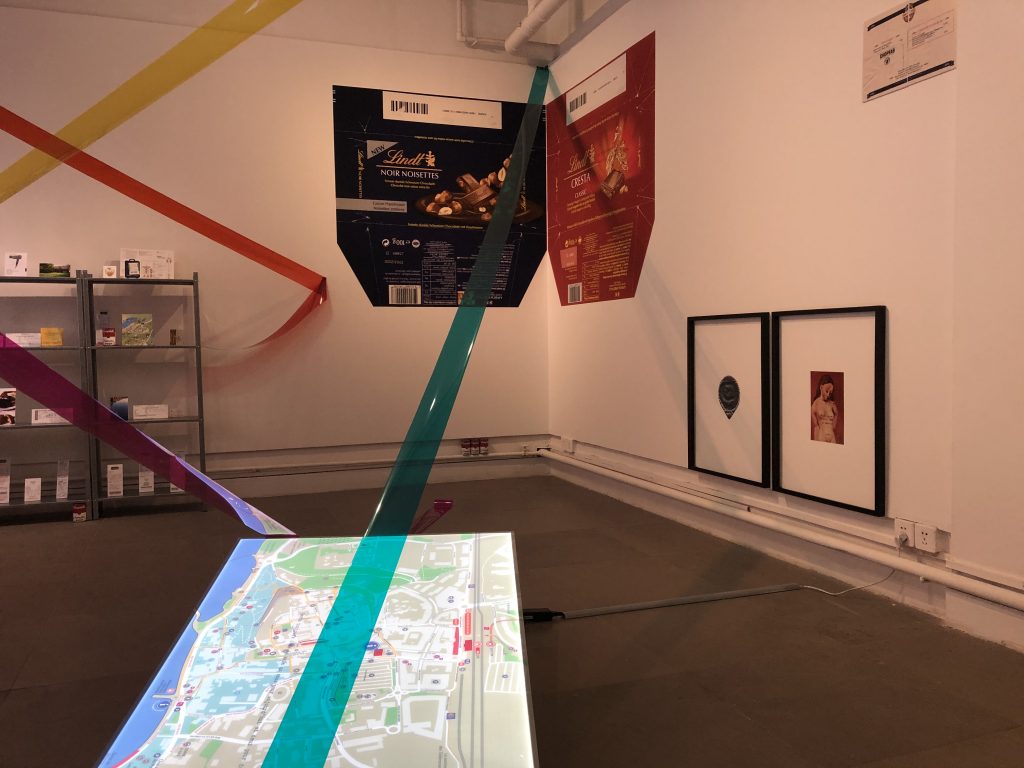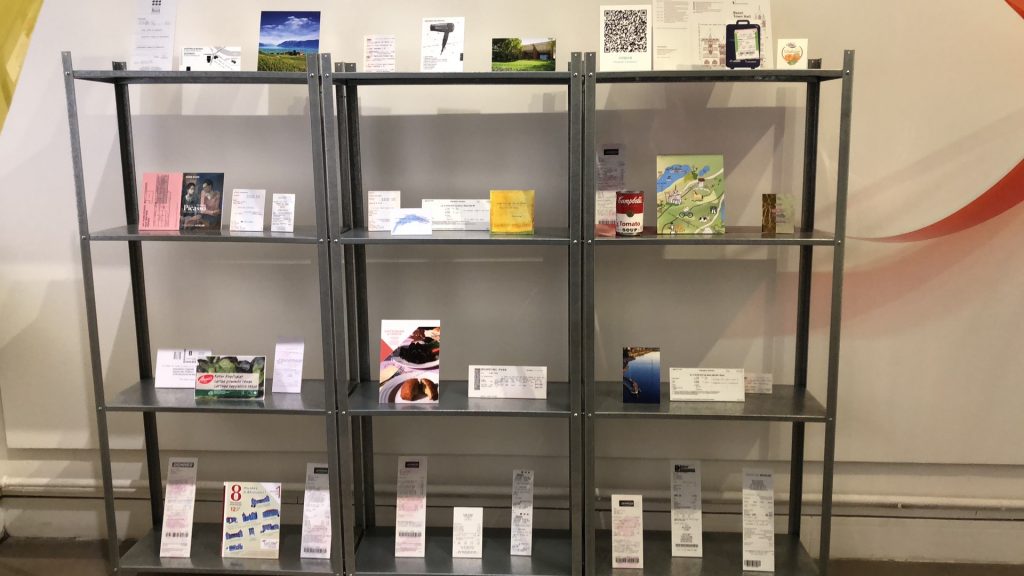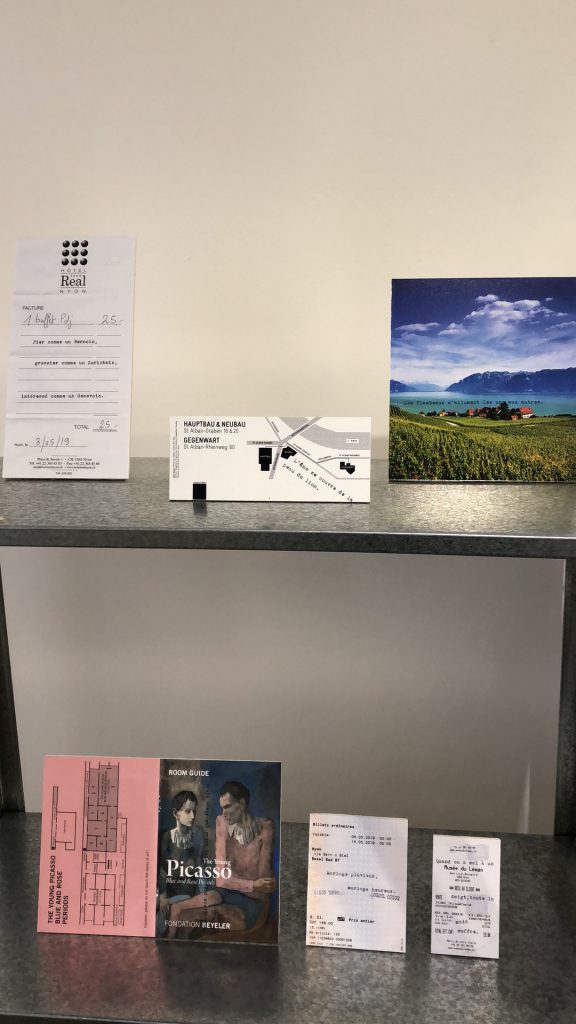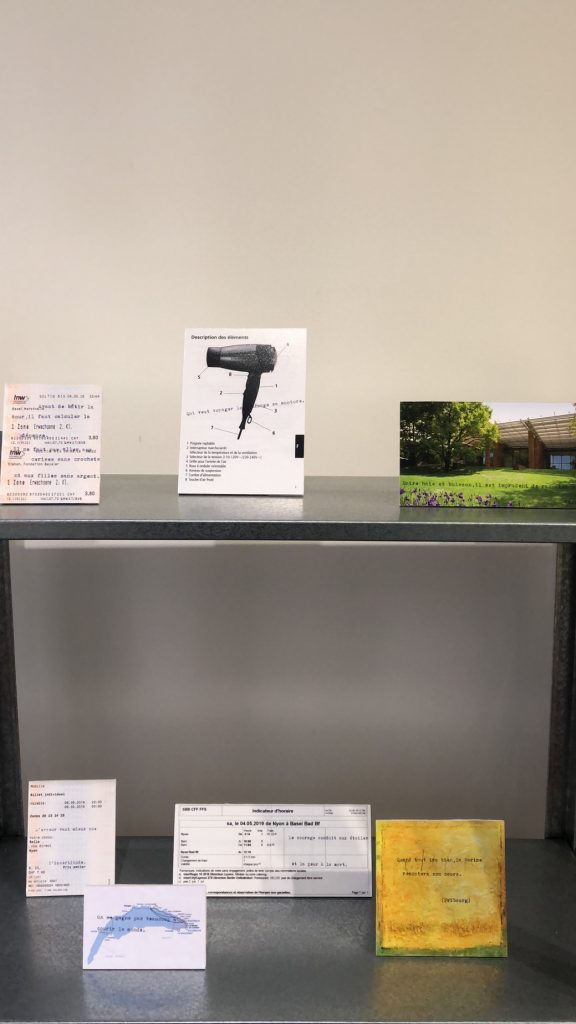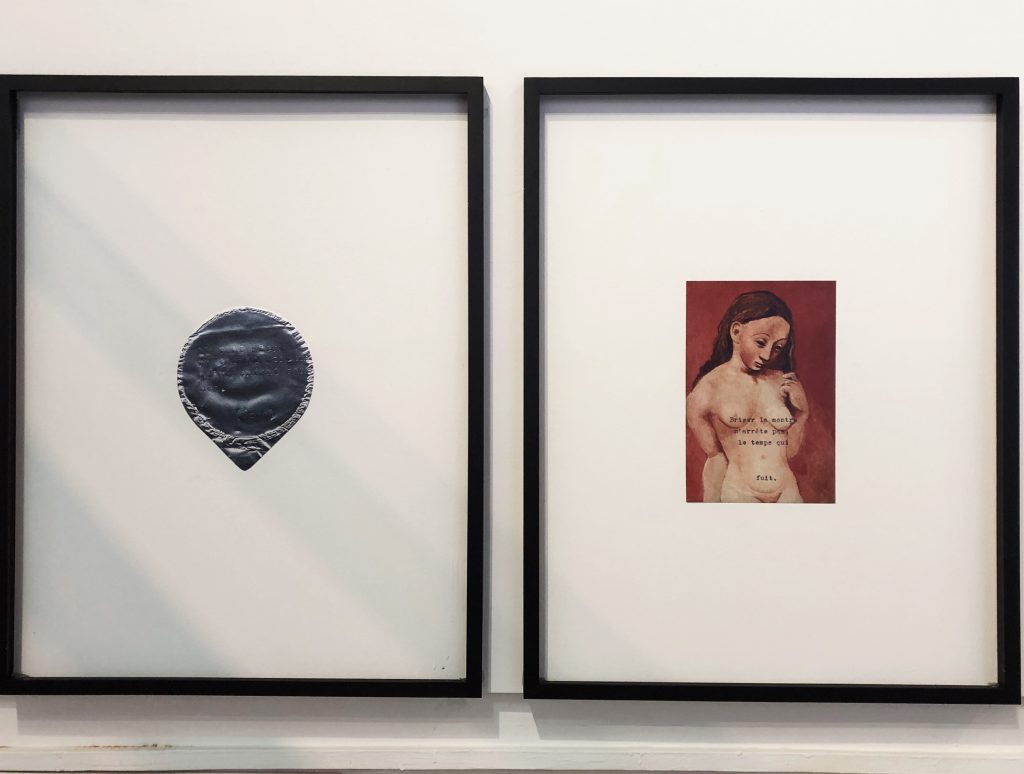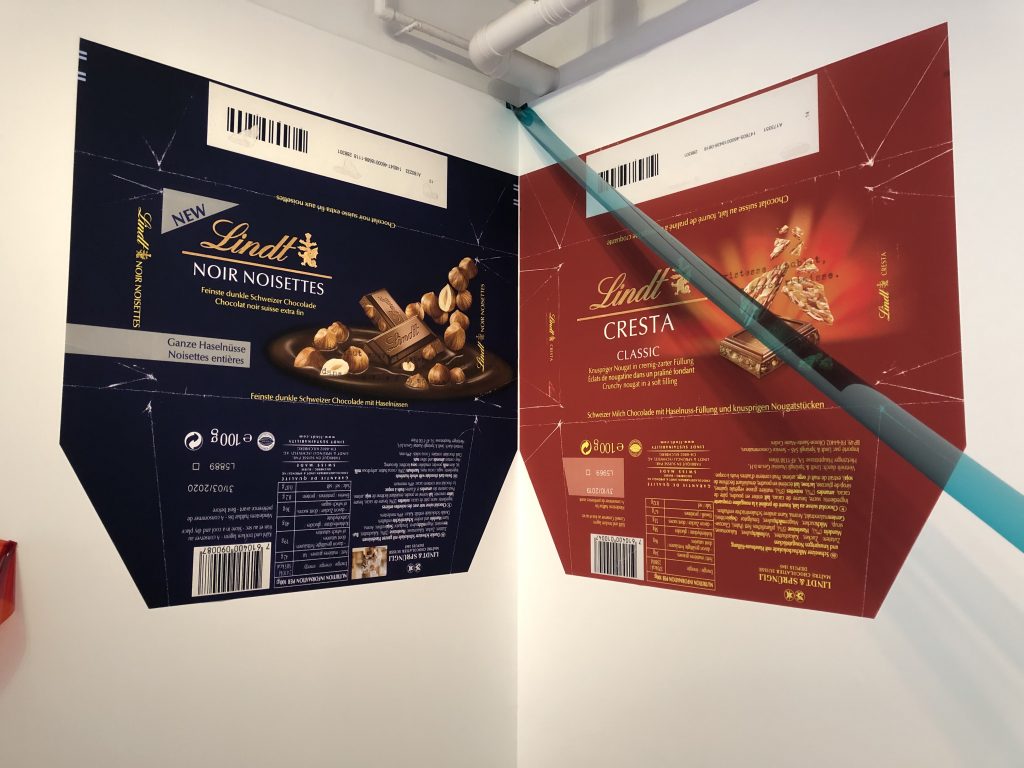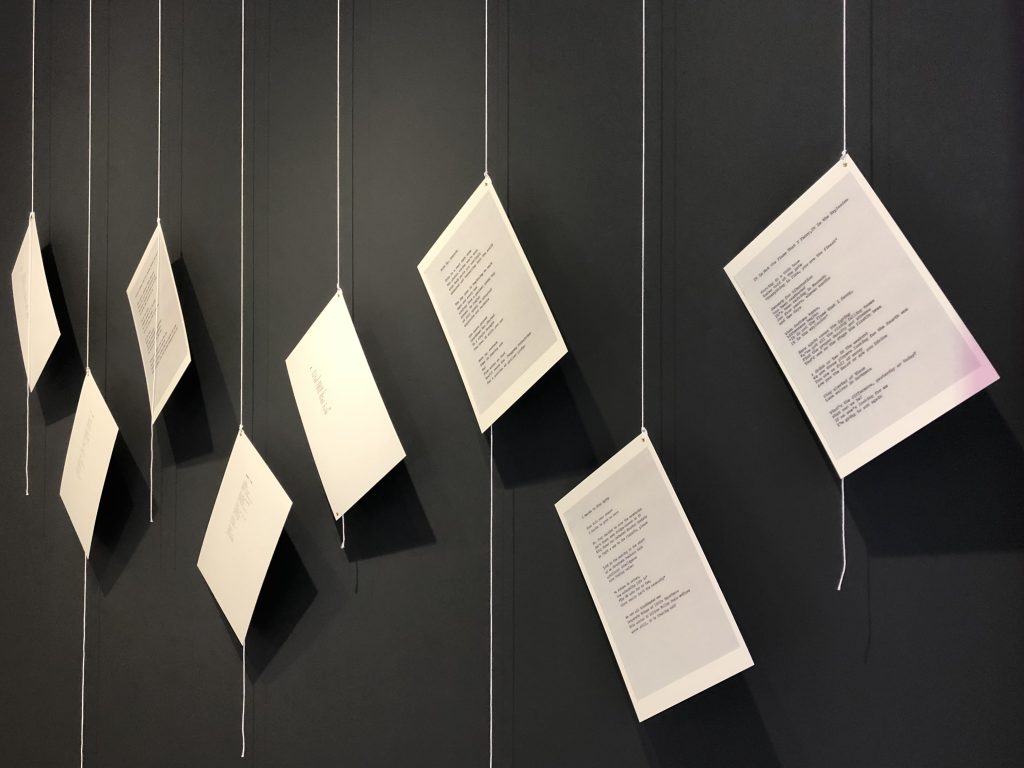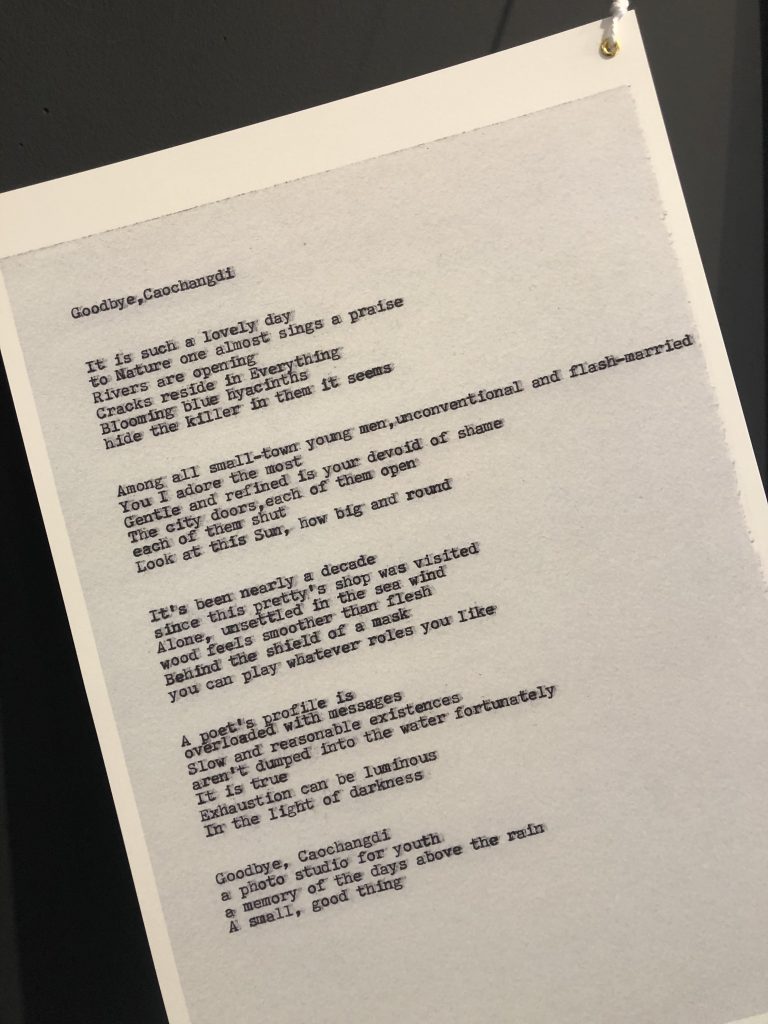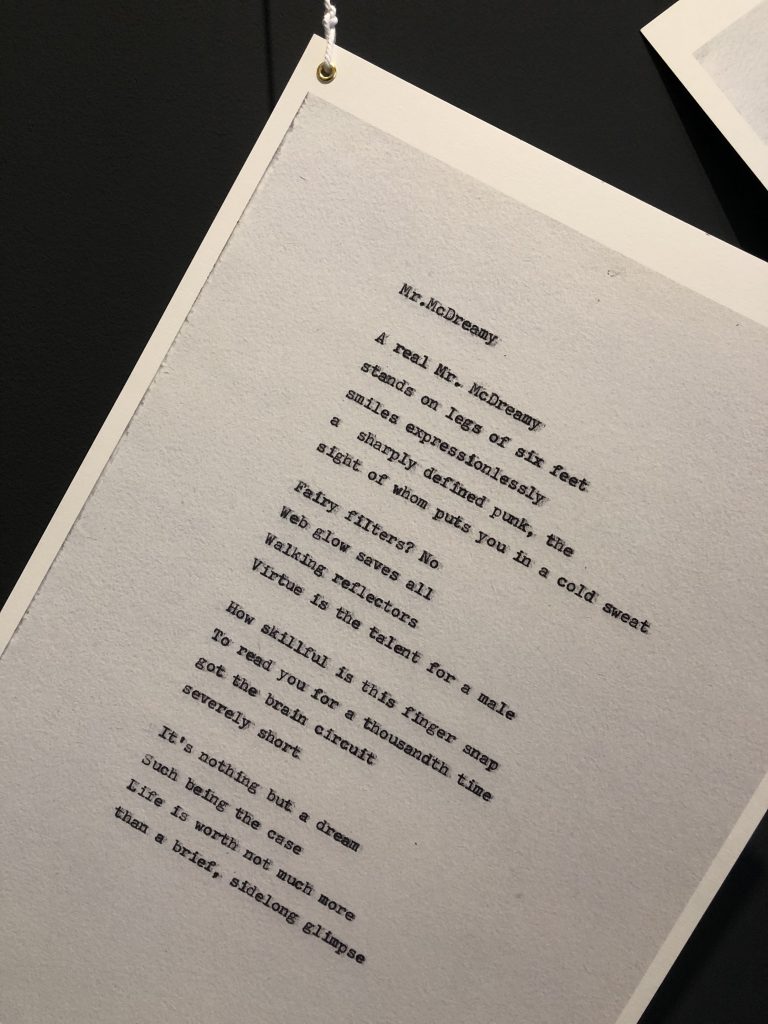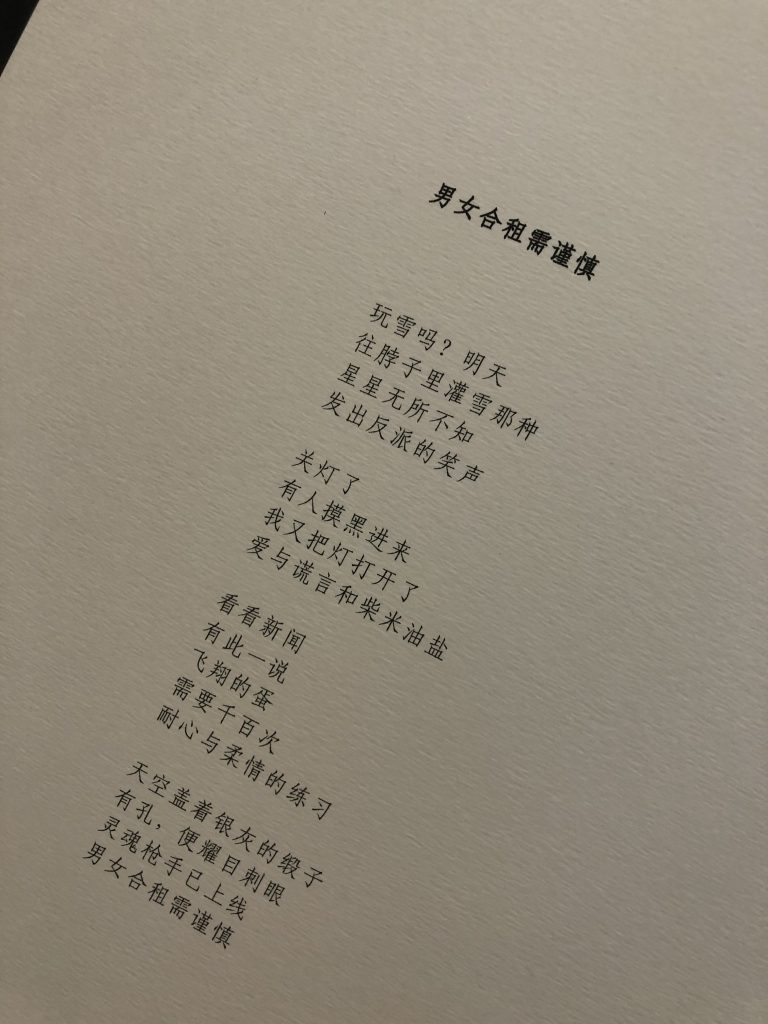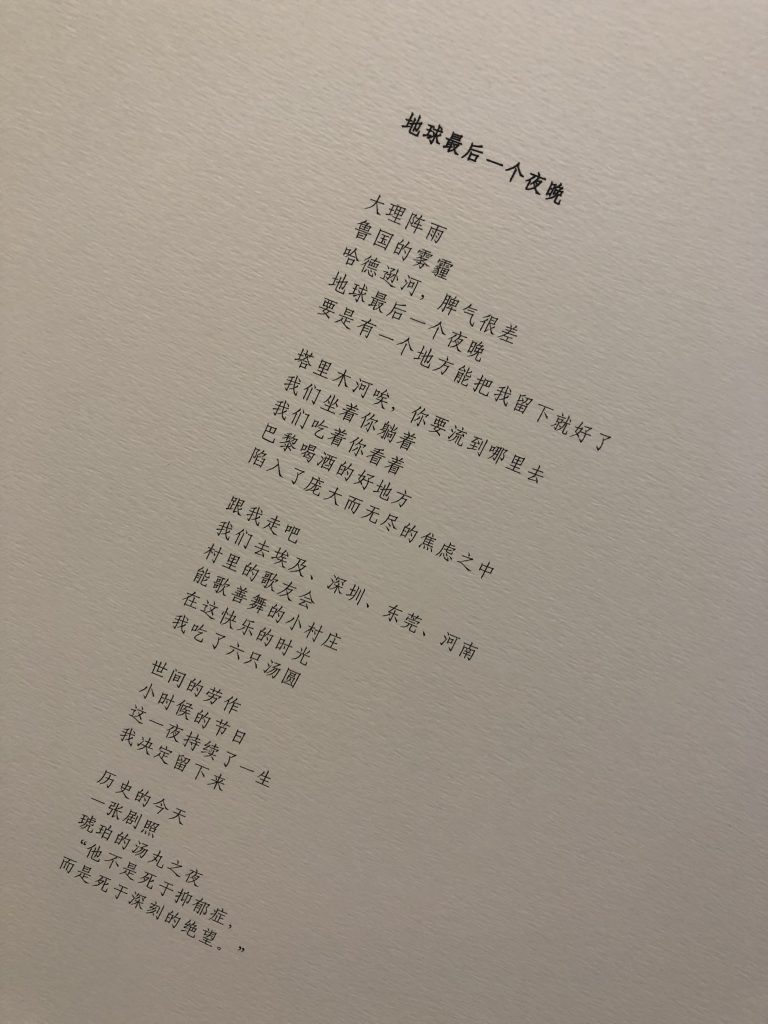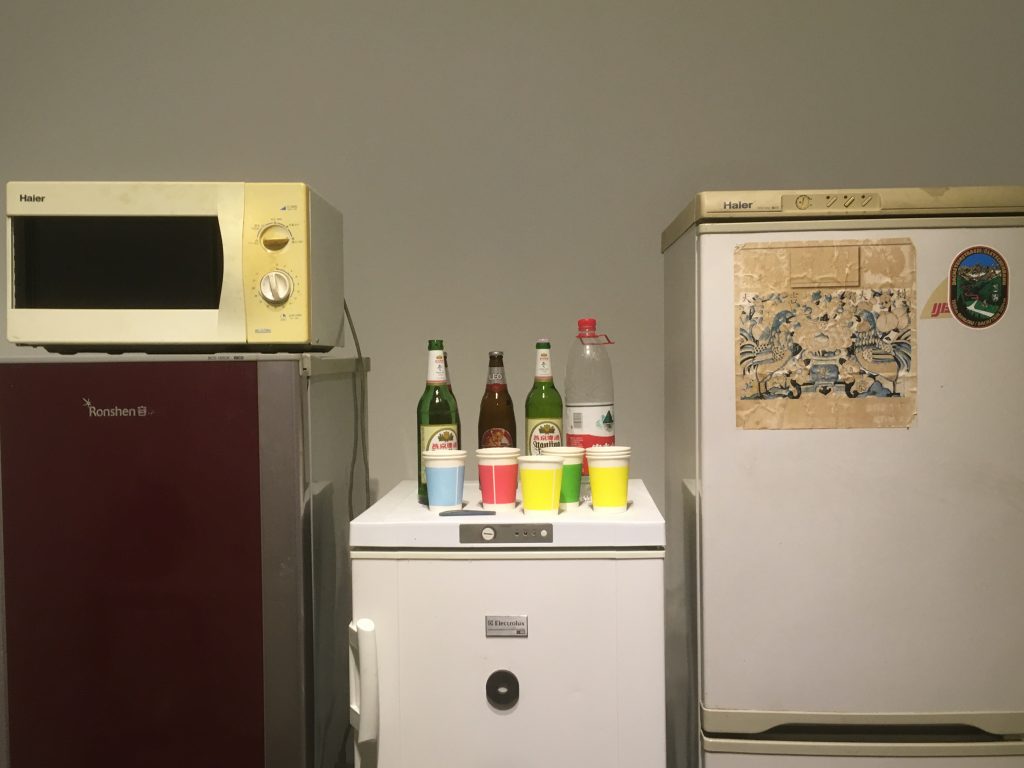Acquisition-Sima Yuan Solo Exhibition
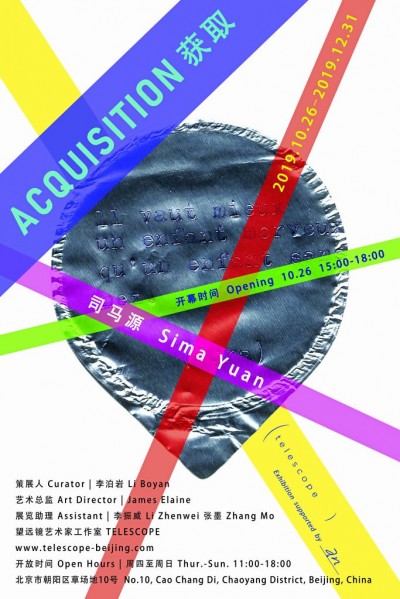
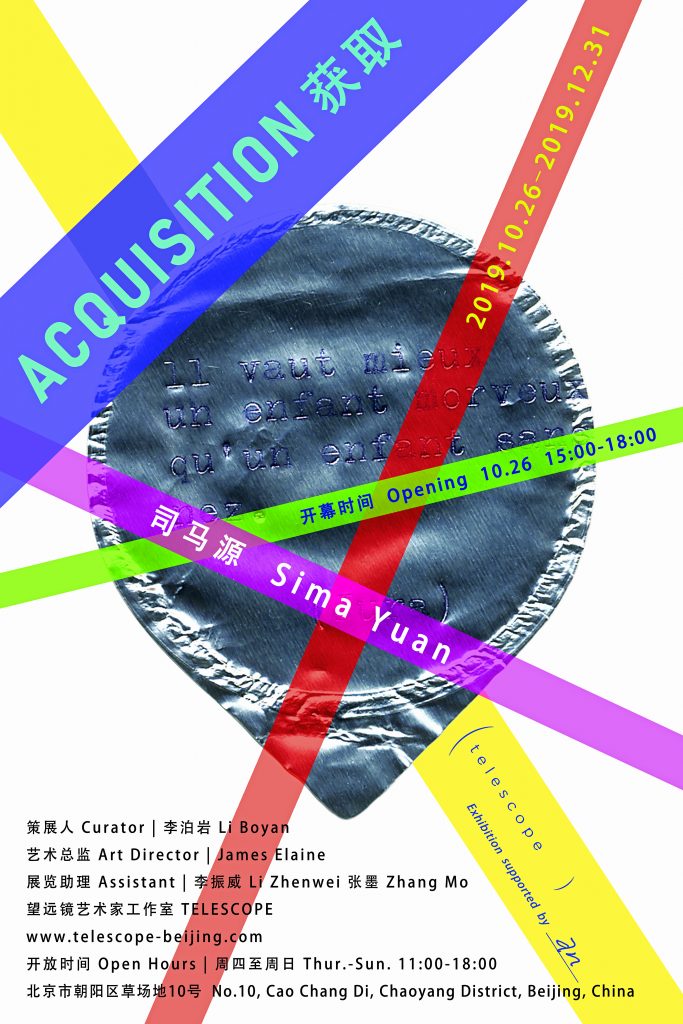
获取|司马源个展
Acquisition-Sima Yuan Solo Exhibition
2019.10.26-2019.12.3
| 策展人 Curator | 李泊岩 Li Boyan
| 艺术总监 Art Director |
林杰明 James Elaine
| 开幕 Opening |
2019.10.26
周六 Sat.
15:00-18:00
| 展期 Duration |2019.10.26-2019.12.3111:00-18:00周四至周日开馆 Thurs.-Sun.
| 地址 Venue |望远镜艺术家工作室
TELESCOPE
北京市朝阳区草场地10号
No.10, CaoChangDi, Chaoyang District, Beijing, China
在100多年前,瑞士语言学家索绪尔(Ferdinand de Saussure)提出了“符号学是研究符号的学说”(Semiotics is the study of signs),在上世纪几乎成为西方文学和艺术研究者不可绕过的理论。1967年,罗兰·巴特(Roland Barthes)发表了他最著名的论文《作者之死》(The Death of the Author),他在文中说到:“语言学为破坏作者提供了珍贵的分析工具。”在今天,文本挪用、图像挪用,都成为了当代艺术创作方法的“工具”。在司马源的作品中,语句成为视觉符号,这是一场混淆了读与看的实验,也是一场貌似不费力气的博弈。
图像在用于消费的过程中,成为了一个时间点的凝聚,它是一个记忆的标本,植入并干扰着人们对于消费的行为。与之相比,消费清单,则是白纸与黑字的组合,它严肃地提示着消费的结果,随时间流逝消失的文字,象征着经由图像激发消费行为之后的苍白。从商业图像的观看,到所获取的消费的文本清单,证明了由鲍德里亚所指出的“广告体现了人工对于通常所谓快乐的追寻。”在肯定图像诱惑的基础上,作品《获取-(图像)》利用一系列现成品广告图像和消费清单作为材料,在这些日常获得并随手唾弃的图像和文本上,获取了某种否定真相的视觉符号。被打字机敲打上去的法文短语,是来自瑞士各州的民间谚语。那些穿越时空的语句,在司马源的创作中,与现代商业图像奇迹般地相遇。并以某种“隐性”的姿态宣告“去劳作化”才是当代艺术的王牌。这些世代相传的处世名言的永恒性,混淆了图像植入大脑的观看惯性,在随之而去的图像与消费中成为对于后世的预言。当“获取”成为结果,图像对于语言的干扰,时刻证明着语言自身的观念功能,并消解着图像原本的意味。
今天,一个文本的产生,随时被更多文本所遮盖,形成文本的浪花,并在转瞬即逝中消失。解释学往往认为文本的产生是作者思想的碎片,符号学则更多将重点放在文本的个别细节而非意义上。然而,文本的消失,呈现出另一种意味,即对文本的消遣,以及对它无聊的玩弄。司马源关注每天社交网络(微信)上的文本生成,她认为这是一种存在于不同人之间的文本对话,将文本连接,再通过逻辑编排,形成一种新的文本——某种类似诗一样的形式。在这种巧妙的编排下,文本消除了快速消失的命运,它重新被激活,充满在嫁接、转译、误用和另一种读法中。《获取-(文本)》就是这样一个关系到日常生活的表达与重塑,文字在阅读中成为想象,在没有任何视觉化呈现的作品中,那些不存在的图像却在文本获取中得到联想。司马源再一次验证了罗兰·巴特“作者之死”这一预言。她将艺术与生活,轻松地沉浸在对当代文明社会和传统价值的判断中。对于她来说“艺术是一场无休止的获取”,这也是她对语言符号超强感知力的表达。
在本次展览中,艺术家司马源通过彼此消解的图文关系,以及被彩色纽带连接在地上的“金宝汤”罐头,暗示着安迪·沃霍尔(Andy Warhol)及其波普艺术的启发。货架上不再是商品而是作为消费的凭证。这一暗示消费网络的展陈方式,勾画出纷杂无序的诱惑和欲望。在小空间中,将是一个配合展览而发起的废旧电器的回收项目,那些被使用过的、空置的商品,以其时代美学,昭示出“获取”这一意涵早已成为推动昨天与未来的生活动力。
More than 100 years ago, the Swiss linguist Ferdinand de Saussure proposed "Semiotics is the study of signs". This theory in the last century became almost impossible for Western literary and artistic researchers to ignore. In 1967, Roland Barthes published his most famous paper, The Death of the Author, in which he said: "Linguistics provides a valuable analytical tool for destroying authors." Today, the “appropriation” of texts and the “appropriation of images” have become “tools” for contemporary art creation methods. In Sima Yuan's work, the texts become visual symbols. This is an experiment that confuses reading and watching, and it is also a game that seems to be effortless.
The image become the intersection point of the time in the process of consumption. It is a specimen of memory that implants and interferes with people’s behaviors toward consumption. In contrast, the consumer list is a combination of paper and printed writing that solemnly suggests the outcome of consumption. The words that disappeared over time symbolize the paleness after the consumption behavior through the images. From the viewing of commercial images to the list of texts for “acquisition” consumption, it is proved by Jean Baudrillard that “advertising embodies the pursuit of man-made happiness.” On the basis of affirmative image temptation, the work Acquisition- (Image) uses a series of ready-made products such as advertisement images and consumption lists as materials. Through these images and texts that can be easily obtained or discarded in daily life, the artist acquires some visual symbol that can negate the "truth". The French phrases that were typed by a typewriter are folk slangs from the Swiss states. Those who traveled through time and space in the creation of Sima Yuan miraculously met modern commercial images and declared in a certain "hidden" manner: "anti-labor" is the trump card of contemporary art. The permanence of these world-famous sayings confuses the viewing inertia of “images implanted in the brain” and becomes a kind of prophecy for future generations in the accompanying images and consumer evidence. When “acquisition” becomes the result, the interference of the image on the language proves the conceptual function of the language itself and eliminates the original meaning of the images.
Today, the creation of a text is covered by more texts at any time, forming a wave of texts that disappear in a fleeting moment. Hermeneutics often believe that the creation of text is a fragment of the author's thoughts, and semiotics focus more on the individual details of the text than on the meaning. However, the disappearance of the text presents another implication: the pastime of the text, and the playfulness of it. Sima Yuan pays attention to the text generation on the daily social network (WeChat). She thinks that it is a kind of dialogue of texts between different netizens. She re-edited the “WeChat Moments” written by different people on-line and logically arranged them to form a new text - a kind of poetry made up of "ready-made sentences". In this arrangement, the destiny of the rapid disappearance of web texts has been eliminated. They are reactivated, full of grafting, translation, misreading, and reinterpret. "Acquisition-(Text)" is such an expression about "remodeling" in everyday life. Words become imagination though reading. In the works without any visual presentation, those absent images get full association in text acquisition. Sima Yuan once again verified the prophecy of Roland Bart's "The Death of the Author." She easily immerses art and life in the judgment of contemporary civil society and traditional values. For her, “Art is an endless acquisition,” which is her expression of the super-perceived linguistic symbols.
In this exhibition, artist Sima Yuan hints at Andy Warhol and the Pop Art Genre by presenting the dissolved relationship between the pictures and the texts and also the Campbell's Soup Cans on the ground which are connected by colored ties. On the shelves are no longer goods, but shopping tickets for consumption. This exhibition, which is reminiscent of the "consumer network", outlines the temptations and desires of human beings. In Gallery 2, the artist presents a recycling project for used electrical appliances Those used and idle goods, with their aesthetics of the times, show that the meaning of "acquisition" has long been a driving force for the past and the future.

